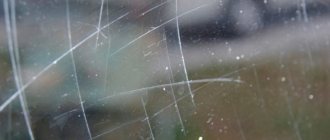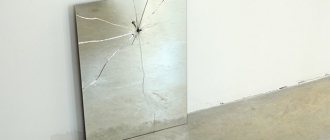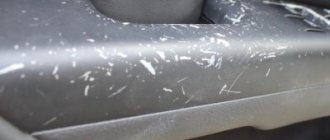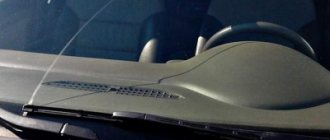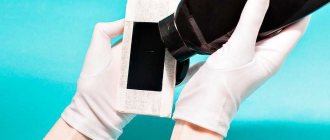A watch is a stylish accessory that is used every day.
During active use, their glass becomes covered with scratches. As a result, it loses its transparency and the visibility of the dial deteriorates. Read the article about how to remove scratches from watch glass (mineral, organic, plastic, sapphire) using improvised means and special compounds.
How to remove scuff marks at home?
If the scratches are shallow, you can get rid of them using improvised means . The procedure for removing them is not complicated, so you can do it on your own. If the damage is serious, use specialized glass polishing compounds.
Paste GOI
GOI paste is a universal polishing composition that is designed to combat scratches, abrasions and other defects. If they are minor, use paste number 3. To remove deep damage, purchase paste number 4.
Procedure:
- Apply a small amount of paste to a cotton pad or flannel cloth.
- Glass is processed with it. The movements should be circular.
- When the surface becomes smooth, apply mineral oil to it and rub it thoroughly.
- Residues of substances are removed with any liquid containing alcohol.
GOI paste is not only effective, but also a budget-friendly product. Its average price is 100 rubles, and one package of 100 g will last for a long time.
Toothpaste
You can remove shallow scratches with toothpaste or tooth powder. The paste is used in its pure form, and the powder is diluted with water to the consistency of a thick paste.
Mode of application:
- clean the surface of visible dirt, go over it with a cotton pad soaked in alcohol;
- the paste is applied to flannel material and scratches are rubbed with it, the glass is polished carefully, without exerting excessive pressure;
- wait for the composition to dry, remove its remains with vegetable oil;
- Polish the surface with a clean paper towel.
The paste is a non-professional polish, so to achieve a visible effect you will have to repeat the procedure several times.
Sometimes you can find advice about mixing toothpaste with soda . Supposedly this combination will give the best effect. You shouldn't do this. Baking soda is an abrasive that can leave behind microscopic scratches. Immediately after polishing, they will be invisible, but as soon as dirt gets into them, all defects will become obvious.
Special formulations
There are many glass polishing products available on the market. When choosing, you need to pay attention to the following points:
Consistency. Pastes and gels are quite dense, so they are used to remove deep damage. Sprays and liquids are designed to combat surface defects.- Grain. To grout glass on watches, it is recommended to use fine-grained compounds. This allows for fine processing.
- Auxiliary components . If the product often gets dirty, use polishes supplemented with an antistatic agent. There are products that provide a water-repellent effect. If the polish contains silicone, then after its use a thin film will form on the surface, acting as additional protection from mechanical damage.
- Price. It is not recommended to buy very cheap products. It is better to opt for mid-price products.
- Equipment. If the product is supplemented with napkins and sponges, then it is more convenient to use.
- Scope of application . Before purchasing the composition, you need to study its label. There are products designed to care for glass and plastic surfaces. There are also restorative, universal and protective compositions. There is no need to choose the last type, since it will not help deal with scratches.
Top 3 effective means for removing scratches from glass:
Polish Hi-Gear HG 5640
This product restores glass transparency and removes minor scuffs and scratches. After its use, a thin film is formed on the surface, which prevents it from becoming dirty. Price 405 rubles for 0.12 l.
Doctor Wax DW 5673
The product is designed to remove scratches and restore lost transparency. Additional effects: water-repellent and dirt-repellent. Price - from 450 rubles.
Willson for headlights and clear plastic
This is a silicone based restorative polish . It masks scratches and makes the glass transparent. The kit includes a napkin for surface treatment. The price of a 0.07 liter package is 1,300 rubles.
Before using the polish, the can of liquid must be shaken thoroughly.
Rules for cleaning glass on wristwatches
If your watch glass is scratched and you decide to clean it, follow a few simple steps for convenient and quick work:
- Spread a piece of fabric on a horizontal, flat surface to ensure good adhesion to the device.
- Prepare your chosen cleaning products and additional materials. Typically, you may need cotton pads, a soft cloth, ear cleaning sticks, and some warm water in a small container for wetting.
- It will be convenient to clean the joints using a cotton swab with an abrasive agent applied to it.
Features of removal depending on the type of watch glass material
Features of processing different types of glass:
- Mineral. This is not the cheapest glass. Therefore, it is not recommended to remove scratches from it with abrasive substances. Experts advise using a grinding machine. Flannel or microfiber is used as a nozzle, and diamond paste is used as a polish. The disk is moved from the edge of the device to its center. The average processing time is 20 minutes. To achieve optimal results, the procedure is repeated.
- Plastic. It's easy to polish. Such a surface can be treated with any composition. The main thing is not to use acetone during pre-cleaning. Its use will lead to clouding of the glass, which will make it impossible to restore its transparency.
- Sapphire. It is the most expensive, but also the most reliable. It is installed on elite models. It is made not from the mineral itself, but from sapphire fiber. The material is quite durable and wear-resistant. It is not recommended to remove scratches from it yourself, as there is a high risk of damaging an expensive product. It is better to entrust a watch with sapphire crystal to a professional. In the workshop it will be cleaned using cold grinding.
- Organic. This glass is the cheapest. It is found in most models. You can clean it with toothpaste and even fine-grit sandpaper.
If you cannot wear your watch carefully, it is recommended to choose a model with sapphire crystal. It is practically invulnerable to damage, so scratches are less likely to form on it.
The video will tell you which watch glass to choose - sapphire, mineral or plastic:
Polishing a watch bracelet
Bvlgari102249 Read more
Watch cases are made from different materials. Most often these are metals, for example, gold, titanium, steel. Plastic is also used, but such products are less durable.
Bracelets are usually made from the same material as the case. When worn, they behave differently, wear out and are damaged in their own way. Let's look at the characteristics of the most common ones:
- Stainless steel. The metal is durable and hard, resistant to scratches, as a result of which it retains its external presentability for a long time.
- Gold. Quite soft, subject to mechanical stress. If a case made of this metal is not treated with rhodium, which protects the surface, it will easily scratch and dent.
- Titanium. Lightweight, resistant to almost any major damage, but small ones appear on it without problems.
To polish a bracelet made of any material, you must first disconnect it from the case, then clean it of dust, dirt, including human sweat and skin particles.
Steel products are the easiest to grind. For this purpose, double-sided jewelry fabric is used. First, the bracelet is processed with the dark, rough side, then it is brought to the desired result with the softer, lighter side. If the surface is not glossy, but matte, this method is also suitable, but you need to polish more carefully and gently.
Significant scratches and scuffs can be removed with a fiberglass brush. Using sweeping movements, we clean out the defect very carefully so as not to leave new marks. If there is a lot of damage, you can use a buff to polish your nails. Both are sold in cosmetic stores. When using these products, you need to protect your hands with gloves.
Precious metals require a more careful approach. To polish them, you need a simple white toothpaste without abrasive particles, a soft toothbrush, or a child's brush, or a soft, lint-free cloth. These products easily clean any dirt, and the surface acquires a pleasant shine. The only rule is not to press too hard, because gold, for example, may be damaged by excessive force.
No less good polishing products are cosmetic powder and baby talc.
You can also get rid of defects on titanium at home. This lightweight metal has hypoallergenic properties, is beautiful and looks good in bracelets. Clean it with a rubber eraser, plain toothpaste, a soft toothbrush and a lint-free cloth, such as a microfiber cloth for cleaning glasses or equipment.
BallDM3090A-SJ-BK More details
BallNM2098C-S3J-SL More details
BallDG2022A-S4A-BK More details
BallCM2198C-S1CJ-BK More details
Scratches are removed with a rubber band, rubbing it in one direction. Next, use toothpaste as a grinding agent. Then it must be removed, this must be done very carefully and thoroughly, it should not get clogged between the links or other elements of the bracelet. Finally, the product is polished with a napkin.
If independent actions do not lead to the desired result, contact a watch service. Professionals remove scratches using special machines and seal the dents.
Contacting specialists
If the watch is expensive or the scratch on it is deep, then it is better to entrust it to professionals.
The final cost consists of several factors. The cleaning method and type of material play a decisive role. Approximate prices:
- plastic polishing – 1300 rubles;
- cleaning of mineral glass – 1000 rubles;
- cleaning the sapphire base – from 1500 rubles.
The cost of the service must be clarified on the spot, after inspection of the product by a specialist. You can find a specialist by looking at an ad on the Internet. Before leaving your watch in the workshop, you need to study the reviews of customers who have already used the service of this organization.
Removing deep scratches
In addition to the above materials, you will need:
- GOI paste numbers from 1 to 4;
- medium and fine grit sandpaper.
Sequencing:
- Remove the glass from the watch case and clean it with microfiber to remove all dirt.
- Begin polishing in a wave-like motion using medium-grit sandpaper.
- Go to GOI No. 4 to remove the most noticeable irregularities, then to GOI No. 3 and No. 2, and finally to fine-grained sandpaper .
- To eliminate micro-scratches and make the glass matte, use GOI No. 1 for polishing.
- To restore the glass's glossy shine, polish its surface with the same wave-like movements using tooth powder or soap for at least 10-15 minutes.
- Clean the glass and put it back into the watch case.
Sandpaper for polishing watches
Helpful information
Tips for removing scratches from watch glass:
To make it more convenient to work with a grinding machine, the glass is removed from the watch.
If this is not possible, remove the strap and secure them in a vice or clamps. The spacers should hold the glass on the sides without touching the main surface.- You need to use a grinding machine with caution, remembering that it heats up the glass.
To prevent it from bursting during processing, it is moistened with water. This method of dealing with scratches is suitable when the watch is dismountable or waterproof. - When working with any liquids, you need to ensure that they do not leak inside. Water or oil ingress may cause serious damage.
- Even the most expensive means cannot cope with a deep crack. In this case, it is better to replace the glass.
- Do not attempt to clean glass with sandpaper. If there are no other options, then use fine-grain sandpaper, marked P2500.
Before processing, you need to make sure that there is no contamination on the surface of the glass. Even small specks can lead to the appearance of new defects.
If you are interested in how to remove small and deep scratches from various surfaces and objects, take a look at this section.
A little history
The first mention of a clock dates back to the end of the 16th century. Back then they were called bracelets. The first such product was presented to Queen Elizabeth 1 of England. This watch cost a fortune, as it was decorated with diamonds and a scattering of pearls.
For a very long time, only the upper strata of the population could afford them. Moreover, the product was worn exclusively by women until the beginning of the 20th century.
Then cheaper alloys began to be used to make watches. And the accessory has become ubiquitous. Every person could afford its cheap analogue. So, thanks to Robert Dudley, watches have not gone out of fashion for more than four centuries.
Rules for eliminating deficiencies
Scratches and chips usually appear on glass. Since wristwatches are considered fragile items, they must be treated with care. They also need to be constantly looked after to prevent deterioration in appearance.
Polishing glass from scratches should not be done with paper. Even if it was recommended to use by someone I know. Nowadays, rough and thick paper is produced, as well as ink containing contaminants. Therefore, such an effect on glass negatively affects matte and glossy coatings.
The glass cleaning procedure is a special science. After completion of work, the surface should not be wiped with a dry, rough cloth, especially if hot water and aggressive detergents were used. But soft material, such as gauze or fiber, is perfect.
Watch glass can be polished using laundry soap. But it is much better to use a special product that will perfectly clean the surface. If washing or cleaning powders are used, you should ensure that abrasive particles are completely dissolved. The work should be done carefully.
Mineral oil
Watch glass polishing can be done perfectly using felt material and mineral oil. First you need to determine the material of the product. Glass can be organic, natural and sapphire. For watches, the first option is usually used.
The glass needs to be removed from the watch, and then carefully cleaned with felt and polirite and crocus are also suitable for this. After work, the surface should be washed with water and treated with mineral oil. This simple method will update the product. It can be used regularly to keep your accessory looking like new.
GOI paste: what is green mass?
The name stands for: State Optical Institute. This is where this cleaning material was created in the 30s. last century. It looks like a greenish mass, sold in the form of a smooth block and in a sealed jar.
Composition of the cleaning product
The main component in the composition is chromium oxide. The grain size of the preparation and its characteristics directly depend on its concentration. The higher the percentage of chromium oxide, the rougher the composition (variation can be from 60 to 85%).
Important! The green mixture is harmless to humans due to the fact that 3-valent chromium oxide is used in its creation, and only 6-valent chromium oxide is harmful. However, it is recommended to wear safety glasses and a mask when working, because when using it, dust appears that irritates the human mucous membranes.
Pasta varieties differ in grain size. Each of them is given a special number:
- No. 4 - rude. It contains: chromium oxide - 81%, stearin - 10, fat - 5, kerosene - 2, silica gel - 2. Light green tint, best scrapes the top layer of the material. Cleans out large scratches left after using other abrasives.
- No. 3 - average. Chromium oxide - 76 parts, fats - 10, stearin - 10, kerosene - 10, silica gel - 2. Pure green hue. Cleans out minor irregularities and scratches and gives the material a matte finish.
- No. 2 - thin. Chromium oxide - 74 parts, stearin - 10, fat - 10, oleic acid - 2.8, kerosene - 2, silica gel - 1, baking soda - 0.2. This composition is characterized by a dark green color. Used for polishing most products.
- No. 1 - thin. Nitric oxide - 65-70%, stearin - 10, fat - 10, kerosene - 10, silica gel - 1.8, soda - 0.2. It is distinguished by a dark color with a tint of green. Goi pastes 1 and 2 are designed for grinding or final finishing of the material, and give it shine and shine.
Important! The most common composition is GOI paste No. 2. It is ideal for products made of precious and non-ferrous metals, as well as glass and plastic.
Dried green mixture can be "reanimated" so that it becomes soft again. This is done using machine oil. Add 3-4 drops of machine or any other technical oil to a small piece, ground into fine crumbs. Place in the microwave for 30 seconds and grind the ingredients into a homogeneous mass.
